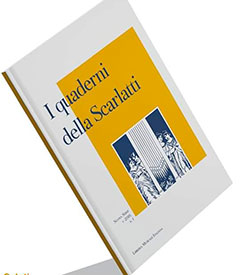 CHI SIAMO
CHI SIAMO
 ATTIVITA'
ATTIVITA'
 BANCHE DATI
BANCHE DATI
 NEWS & INFO
NEWS & INFO
- CIDIM
- Soci
- Musica in rete
- Vincitori di concorsi
- Selezioni e audizioni
- Prime assolute
- Dal vivo in Italia
- Dal vivo nel mondo
- Convegni / Incontri
- Festival e stagioni concertistiche in Italia
- Radio e televisione
- Nuove incisioni, DVD
- Libri e partiture
- Periodici
- Corsi
- Concorsi
- Formazione di base e di nuovo pubblico
- Comunicati e
Rassegna stampa - In Italia e dal mondo
- Festival e stagioni concertistiche nel mondo
 COMMUNITY
COMMUNITY
PUBBLICAZIONI
 Ricerche sulla musica
Ricerche sulla musica Franco Caracciolo. Il fascino discreto della (ri)scoperta di Stefano Valanzuolo I Quaderni Associazione Alessandro Scarlatti ISBN 9788855430807 Collana: I Quaderni della Scarlatti - Nuova serie 2-2020, LIM Editrice srl, Lucca 2021 pp. 214 - 17×24, € 7,00 Shop Descrizione: In 1949, the Orchestra Alessandro Scarlatti, born on the initiative of the homonymous musical association in collaboration with the Neapolitan Chamber Orchestra founded by Vincenzo Vitale, held the first concert of its history. It was conducted by a twenty-nine year old much appreciated musician, whose name was Franco Caracciolo. Fourteen years later, for celebrating the inauguration of a new great music hall in Naples, the Orchestra Scarlatti — meanwhile under the wing of RAI Radiotelevisione Italiana — performed a long side Fernando Germani, organist, and the great pianist Arturo Benedetti Michelangeli under the baton of Caracciolo, as then. In December 1992, the same Neapolitan orchestra took a painful leave of the city — dismantled by RAI for budgetary reasons — on the notes of the Clarinet Concerto by Mozart, soloist Sabine Meyer: for the last time, Caracciolo gave music to the audience of what has become, in the meantime, his own city. Caracciolo lived out of the spotlight, at the service of the orchestras to which he wanted to bind himself, taking care of the public the music and the young artists, of course, with whom he loved to work in the classrooms of Conservatories as well as on the stages. The music audience is grate to him for the discovery or rediscovery of many works of Neapolitan Baroque but also for the courageous approach to modern and contemporary European orchestral production. |






